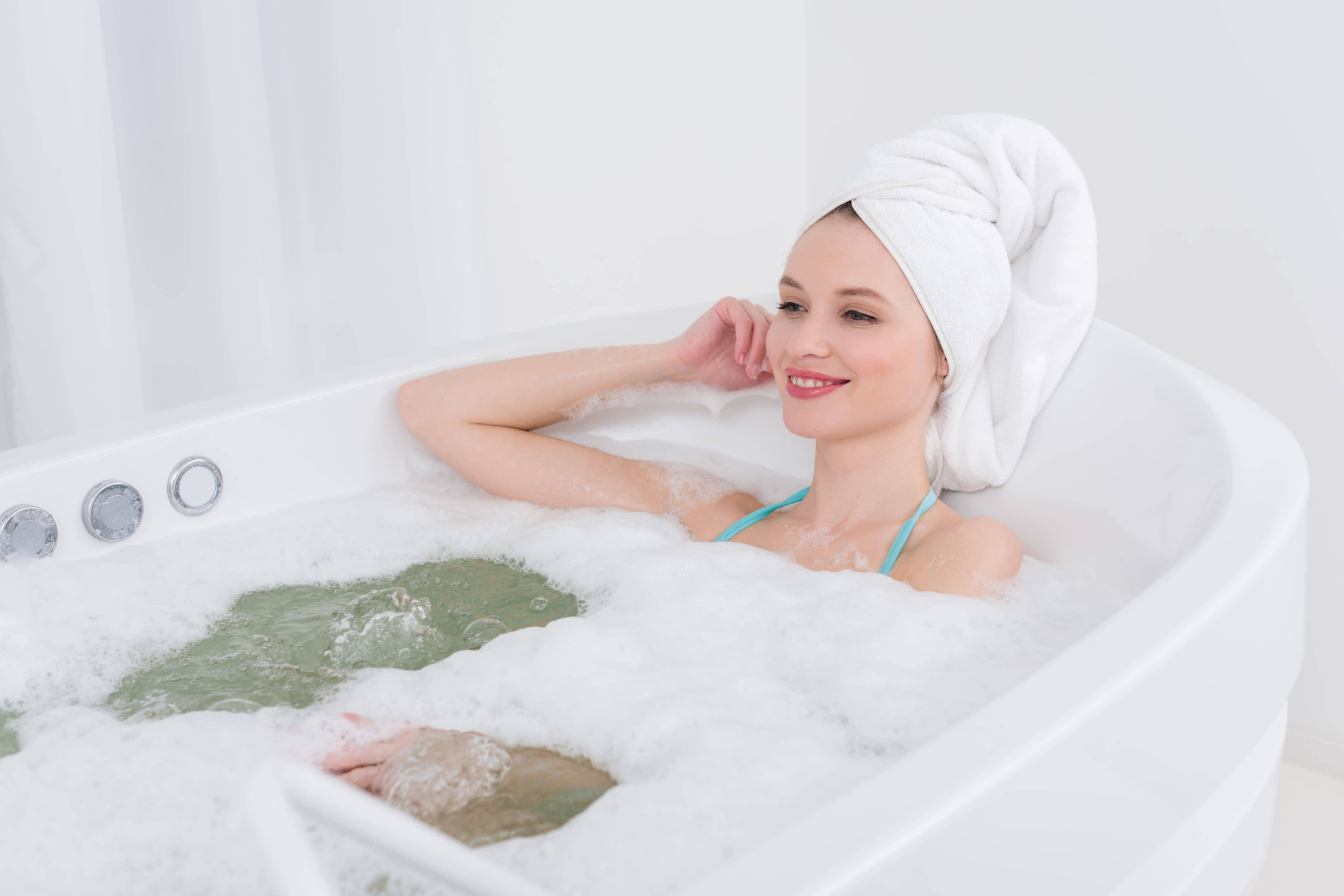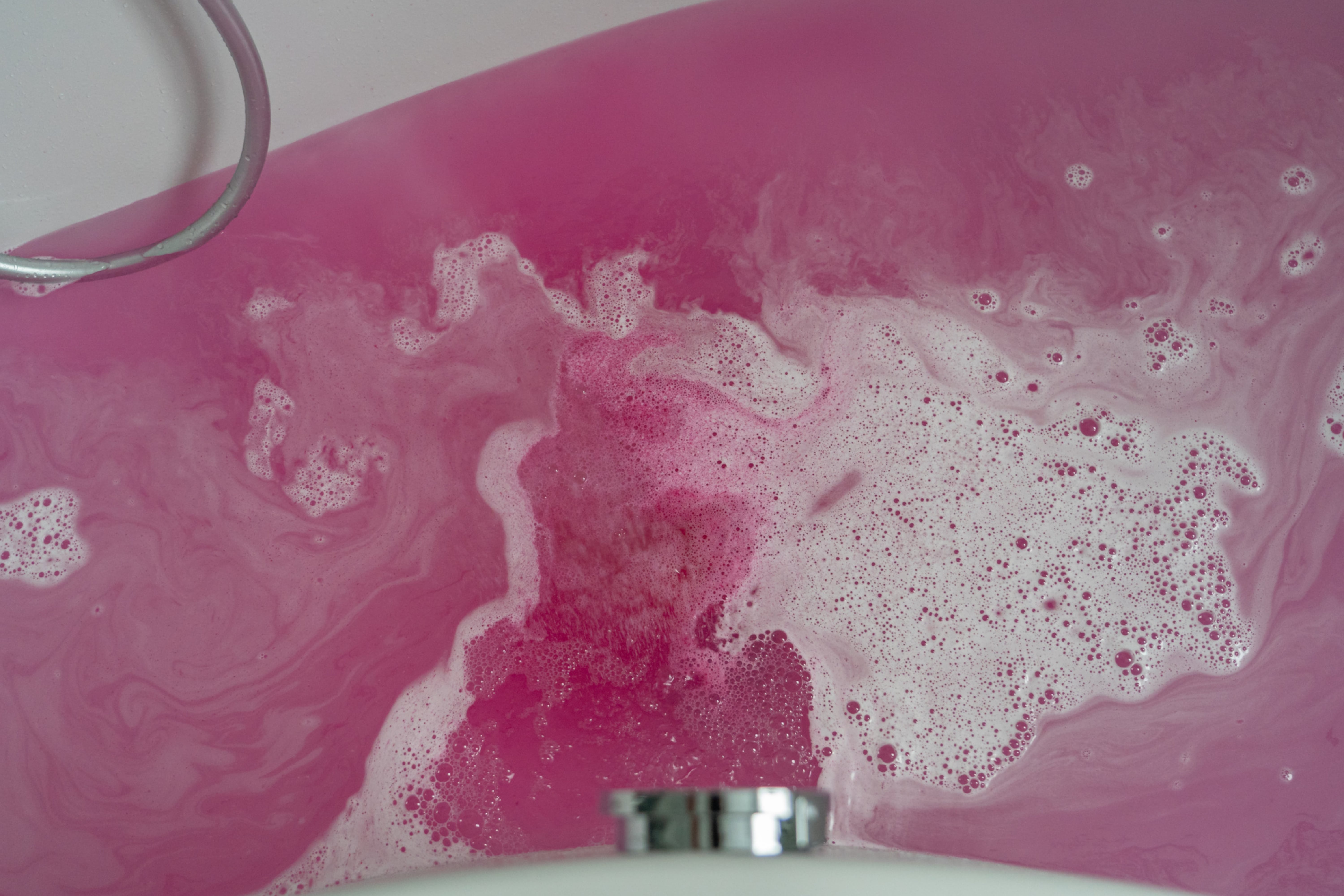Taking a warm, relaxing bath can be a tranquil experience. There’s nothing more soothing than immersing oneself in a tub filled with warm water, feeling the stress, and tension melt away.
However, maintaining the perfect water temperature can be a challenge, especially during the chilly seasons. While some prefer a quick shower, many find the luxurious comfort of a long bath incomparable.
In this article, we explore ten practical tips to ensure your bath water stays warm longer, enhancing your bathing experience without any hassle. You will find easy and efficient ways, some of which might be surprising, to keep the water temperature just right!
1. Preheat the Tub
Starting with a warm tub is crucial to ensuring the longevity of your bath’s warmth. By running hot water before filling the tub, the material of the tub will absorb the heat, thus maintaining the water temperature for longer.
- Run Hot Water First: Allow hot water to run for a few minutes to warm up the tub before adding cold water to reach the desired temperature.
- Use Warm Cloth: Wiping the tub with a warm, wet cloth can also preheat it efficiently, providing a warm base for your bath water.

2. Insulate Your Bath Tub
A well-insulated bathtub can retain heat significantly longer than a non-insulated one, keeping the water warm throughout your bath.
- Install Tub Insulation: Tub insulation can be installed around the tub to prevent heat loss.
- Use Bath Mat: Placing a rubber bath mat at the bottom of the tub can also act as a layer of insulation, reducing the rate at which heat is lost.
3. Use a Bath Cover
A bath cover is an excellent way to prevent heat loss due to evaporation, ensuring the water remains warm for an extended period.
- Invest in a Quality Bath Cover: Choosing a cover made of materials known for good heat retention can make a considerable difference.
- DIY Bath Cover: A makeshift cover using a thick, waterproof sheet can also be effective in maintaining water temperature.
4. Opt for Warm Water Re-circulation Systems
Warm water re-circulation systems are innovative solutions that circulate the water in the tub, maintaining a consistent temperature.
- Understand the Mechanism: These systems use a pump to circulate the water through a heating element, ensuring consistent warmth.
- Choose Wisely: When selecting a system, look for energy-efficient models that are suitable for your bathtub size.
5. Add Hot Water Incrementally
Adding hot water gradually can help maintain the desired temperature without overheating the bath.
- Strategic Timing: Incorporate hot water intermittently throughout the bath to counteract the cooling.
- Mix Well: Ensure proper mixing to avoid hot spots and maintain a consistent temperature.

6. Use Heat-Retaining Materials for Bath Accessories
The materials of your bath accessories can play a role in maintaining the warmth of your bath water.
- Opt for Insulating Materials: Choosing accessories made of materials known for good heat retention can be beneficial.
- Research Well: Before purchasing, research the properties of the materials to ensure they meet your heat retention needs.
7. Keep the Bathroom Door Closed
Keeping the bathroom door closed can minimize the escape of steam and heat, maintaining the warmth of the bath water.
- Seal Gaps: Ensure there are no gaps or spaces through which heat can escape.
- Maintain Room Temperature: Keeping the bathroom warm will indirectly help in maintaining the bath water temperature.
8. Fill the Tub Up to the Top
Filling the tub to the top can ensure maximum heat retention, allowing you to enjoy a warm bath for a longer duration.
- Understand Water Levels: The more water there is in the tub, the longer it will retain heat.
- Avoid Overfilling: While filling to the top is beneficial, avoid overfilling to prevent water spillage.

9. Use Bath Oils and Salts
Some bath additives, like oils and salts, can change the water’s specific heat capacity, thus affecting its cooling rate.
- Choose Wisely: Select oils and salts known for their heat retention properties.
- Understand Quantity: Too much additive may have the opposite effect, so ensure proper proportions.
10. Invest in a Quality Bathtub
Lastly, the quality and material of your bathtub are pivotal in determining how long your bath water stays warm.
- Research Materials: Different materials have varying levels of heat retention.
- Consider Your Needs: Choose a bathtub that suits your preferences, lifestyle, and budget.
The Science Behind a Cooling Bathtub: What Makes Your Bathwater Lose Heat Faster?
Bathing in warm water is rejuvenating, but it can quickly turn to discomfort as the water begins to cool down. The rate at which your bathwater loses heat depends on a multitude of factors, from the material of your bathtub to the surrounding environment.
Understanding these elements can help you better manage your bathwater temperature, ensuring a consistent, relaxing experience.
1. Exposure to Air
One of the most significant factors in a bathtub cooling down is the exposure of water to air. When the surface area of the water is exposed to air, the process of convection and evaporation comes into play. Evaporation cools the water as molecules escape from the water’s surface, taking heat energy with them. A wide and open tub will likely lose heat faster due to increased exposure to air. To counter this, consider using a bath cover to minimize exposure to air.
2. Room Temperature
The ambient temperature of the bathroom has a substantial effect on the cooling rate of the bathwater. If the bathroom is cooler, the bathwater will lose heat more rapidly due to the temperature difference between the water and the surrounding air. Keeping the bathroom door closed and ensuring a warmer room temperature can slow down the cooling process.
3. Bathtub Material
The bathtub material is pivotal in heat retention. Materials like acrylic and fiberglass are more prone to cooling down quickly as they don’t hold heat as well as cast iron or stone. Choosing a bathtub made from materials known for their heat retention properties can extend the warmth of your bathwater.
4. Water Level
The level of water in your bathtub also influences how quickly the water cools down. A higher water level can retain heat longer due to the increased amount of water. However, more exposed surface area can also mean a faster rate of evaporation, leading to quicker cooling. Balancing the water level is crucial in maintaining the desired temperature for an extended period.
5. Insufficient Insulation
The lack of proper insulation around and underneath the bathtub can cause faster heat loss. Proper insulation acts as a barrier, reducing the speed at which heat escapes from the water to the surrounding materials and air. Installing effective insulation can help maintain the bathwater temperature for a longer duration.
6. Use of Additives
While some bath additives like oils and salts can potentially slow down the cooling process, others may speed it up. For instance, additives that increase water movement or agitation can promote faster heat loss through increased evaporation. Understanding the properties of different bath products is essential in managing bathwater temperature effectively.
7. Frequent Movement
Frequent movement and agitation of water can also speed up the cooling process. Splashing and moving around can increase the surface area exposed to air, leading to enhanced evaporation and faster cooling. Keeping movement to a minimum can help in maintaining the water temperature.
Mitigating the Cooling
While these factors can contribute to a quicker cooling bathtub, implementing some strategic methods can help mitigate this. For instance, using a bath cover can reduce air exposure, maintaining a consistent room temperature can minimize heat loss to the surroundings, and choosing the right bathtub material and ensuring proper insulation can significantly enhance heat retention.
Understanding the factors contributing to your bathwater cooling down rapidly can significantly enhance your bathing experience. By being aware of the influences of room temperature, bathtub material, water level, and user behavior, bath enthusiasts can implement strategies to extend the soothing warmth of their bathwater, making each bath a truly relaxing and rejuvenating experience.

Conclusion
Enhancing your bath experience by maintaining the perfect water temperature doesn’t have to be complicated. Implementing these practical tips can transform your bathing experience, making it more relaxing and enjoyable. From insulating your tub to using heat-retaining materials and bath additives, each method brings its unique benefits. So, explore these options and find what works best for you, ensuring your bath times are warm, soothing, and rejuvenating!
